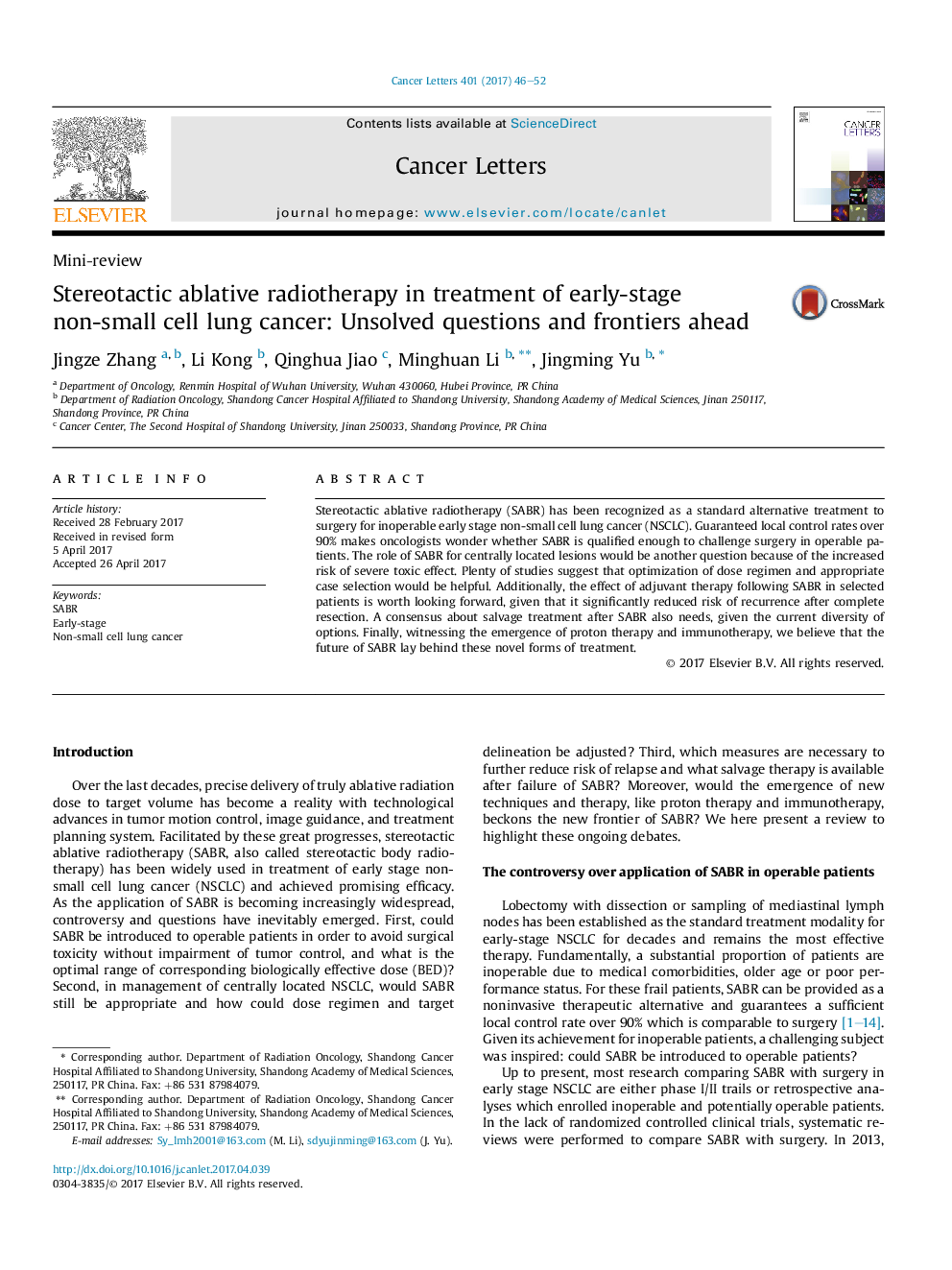| کد مقاله | کد نشریه | سال انتشار | مقاله انگلیسی | نسخه تمام متن |
|---|---|---|---|---|
| 5525419 | 1546668 | 2017 | 7 صفحه PDF | دانلود رایگان |
- SABR guarantees effectiveness equal to surgery and better safety in short term.
- Dose regimen and patient selection is important for SABR to treat central NSCLC.
- Dose is vital to prevent recurrence; role of adjuvant therapy remains unclear.
- Salvage treatment is too diverse to reach a consensus.
- Proton therapy and immunotherapy might beckon the new frontier of SABR.
Stereotactic ablative radiotherapy (SABR) has been recognized as a standard alternative treatment to surgery for inoperable early stage non-small cell lung cancer (NSCLC). Guaranteed local control rates over 90% makes oncologists wonder whether SABR is qualified enough to challenge surgery in operable patients. The role of SABR for centrally located lesions would be another question because of the increased risk of severe toxic effect. Plenty of studies suggest that optimization of dose regimen and appropriate case selection would be helpful. Additionally, the effect of adjuvant therapy following SABR in selected patients is worth looking forward, given that it significantly reduced risk of recurrence after complete resection. A consensus about salvage treatment after SABR also needs, given the current diversity of options. Finally, witnessing the emergence of proton therapy and immunotherapy, we believe that the future of SABR lay behind these novel forms of treatment.
Journal: Cancer Letters - Volume 401, 10 August 2017, Pages 46-52
